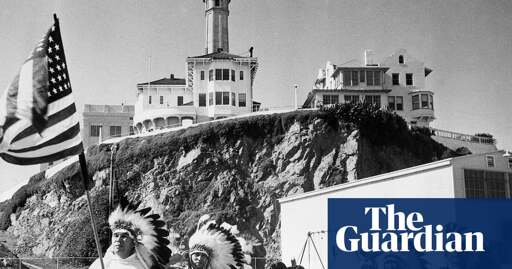When Donald Trump pledged to reopen the notorious Alcatraz prison as a detention center for immigrants and violent offenders, the idea was met with contempt and mockery. San Francisco leaders have called it Trump’s “stupidest idea yet” and threatened to cut off the island’s sewage and garbage services if the president acts on his carceral ambitions.
But for the Indigenous people of the San Francisco Bay Area, the idea was more than just laughable. It was an affront to their identity, and an attempt to erase the island’s history as a site of Indigenous resistance.
After the federal prison shut down in 1963, the island took on a second life as the scene of one of the most important acts of Native American resistance in modern history. Between November 1969 and June 1971, Indigenous activists occupied Alcatraz for 19 months, demanding rights and resources for Native people.
Now, as Trump appears set on pushing ahead despite the extraordinary costs and logistical hurdles, tribal members are fighting to preserve a history that is still little-known beyond Indigenous circles.
Alcatraz has always loomed large for April McGill. Growing up in Mishewal Wappo territory in California’s Sonoma county, McGill, who is a member of the Yuki and Wappo tribes, frequently heard stories from the veterans of the occupation who lived in her community. Her aunt even babysat the children of Richard and Annie Oakes, who led the movement.
When she moved to San Francisco as a teenager, the island’s shadow grew – especially as McGill, who is now executive director of the city’s American Indian cultural center, became increasingly involved in activism herself, and learned about the pivotal role the occupation played in maintaining Native sovereignty in California and nationwide. “It holds a really personal, deep place to me,” McGill said. “It symbolizes so much of our history.”


